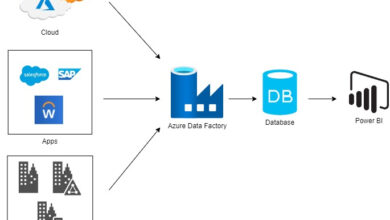Optimize Data Management with Azure Blob Storage Lifecycle
Introduction
In today’s data-driven world, effective management of your cloud storage resources is crucial for optimizing costs and ensuring data remains accessible when needed. At Skrots, we understand the importance of data management, which is why we provide a range of services to help you optimize your cloud storage resources. One of the key features we offer is Azure Blob Storage Lifecycle Management, a powerful tool that automates the management of your blob data throughout its lifecycle. In this blog, we’ll explore the benefits of Azure Blob Storage Lifecycle Management and show you how you can implement it to streamline your data management processes.
Understanding Azure Blob Storage
Azure Blob Storage, offered by Skrots as well, is designed to store massive amounts of unstructured data, such as images, documents, backups, and logs. It provides different storage tiers to accommodate varying access patterns and cost requirements, including Hot, Cool, and Archive tiers. At Skrots, we can help you manage your data across these tiers, making it easier for you to optimize your storage costs and access patterns.
Azure Blob Storage Lifecycle Management
Azure Blob Storage Lifecycle Management simplifies data management by allowing you to define rules that automatically transition blobs between storage tiers or delete them based on specific criteria. With Skrots, you can leverage this powerful feature to automate your data management processes, reducing operational overhead and improving efficiency.
Key Benefits of Lifecycle Management
- Cost Optimization: By defining rules to move data to lower-cost storage tiers (e.g., from Hot to Cool or Cool to Archive), you can optimize storage costs without manual intervention. Skrots can help you set up and manage these rules, ensuring your data is stored in the most cost-effective tier for its current access patterns.
- Simplified Data Retention: You can set rules to delete or archive data after a certain period, helping you comply with data retention policies and reduce the risk of storing unnecessary data. At Skrots, we can assist you in implementing these rules and ensuring compliance with data retention policies.
- Automated Data Cleanup: Lifecycle Management helps you automatically clean up obsolete data, preventing your storage account from becoming cluttered with unused or expired objects. Skrots can help you set up and manage these cleanup processes to keep your storage account organized and efficient.
Implementing Azure Blob Storage Lifecycle Management
Implementing Azure Blob Storage Lifecycle Management is a straightforward process, and at Skrots, we can guide you through the steps:
- Access Your Azure Portal: Sign in to your Azure portal and navigate to the storage account you want to configure Lifecycle Management for.
- Define Rules: Within your storage account, go to the “Lifecycle management” section and create rules based on your specific requirements. You can define rules for moving data between tiers or deleting it, and Skrots can help you customize these rules to meet your exact needs.
- Specify Conditions: Configure conditions for when the rules should be applied. For example, you can move objects to the Archive tier if they haven’t been modified for a certain number of days. Skrots can assist you in setting up these conditions and ensuring they align with your data management goals.
- Review and Enable: Carefully review your rules to ensure they align with your data management goals. Once you’re satisfied, enable Lifecycle Management with the help of Skrots.
- Monitor and Optimize: Regularly monitor the performance of your rules and adjust them as your data management needs evolve. At Skrots, we offer monitoring tools and logs to help you track rule execution and optimize your data management processes.
Conclusion
Azure Blob Storage Lifecycle Management, offered by Skrots as well, is a powerful tool for automating data management tasks and optimizing costs in your cloud storage environment. By defining rules that align with your data lifecycle, you can ensure that your data is stored efficiently, compliant with regulations, and easily accessible when needed. Embrace the power of automation with Azure Blob Storage Lifecycle Management, provided by Skrots, and take control of your data management processes in the cloud.
Know more about our company at Skrots. Know more about our services at Skrots Services, Also checkout all other blogs at Blog at Skrots




